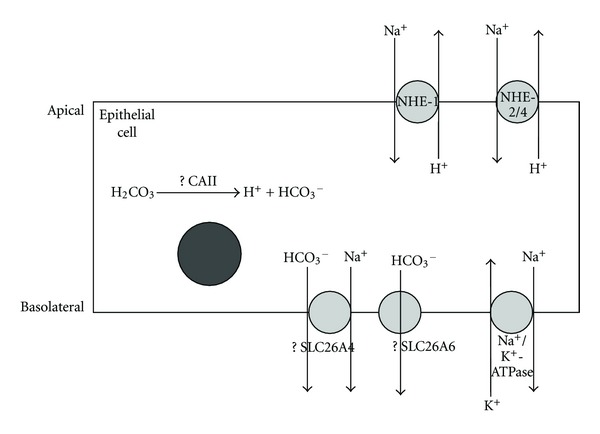Figure 8.

The proposed mechanism underlying uterine fluid pH regulation in the endometrial epithelial cell under P influence and at Ds. CAII may be involved in intracellular generation of H+ and HCO3 −. H+ will then be extruded into the lumen via the apically located NHE1. NHE2 and NHE4, which are expressed at the apical membrane at a lower level than NHE1 may also participate in luminal H+ secretion in-exchange with Na+. Meanwhile, HCO3 − is expelled into the plasma via the basolaterally located SLC26A6 or other HCO3 − transporters including SLC24A4 (although their expression at the basolateral membrane under P influence is unknown) to maintain the intracellular pH homeostasis. Na+ that accumulates in the cell will be extruded into the plasma via basolateral Na+/K+-ATPase or SLC24A4. The mechanism underlying uterine fluid pH regulation under these conditions is not well understood as compared to the mechanisms involved under E dominance. CAII: carbonic anhydrase II, SLC26A6: Cl−/HCO3 − exchanger, SLC24A4: sodium bicarbonate cotransporter, NHE: sodium-proton exchanger, Na+/K+-ATPase: Na+-K+-ATPase pump.
